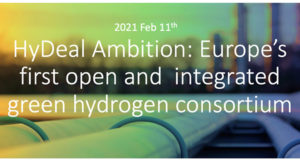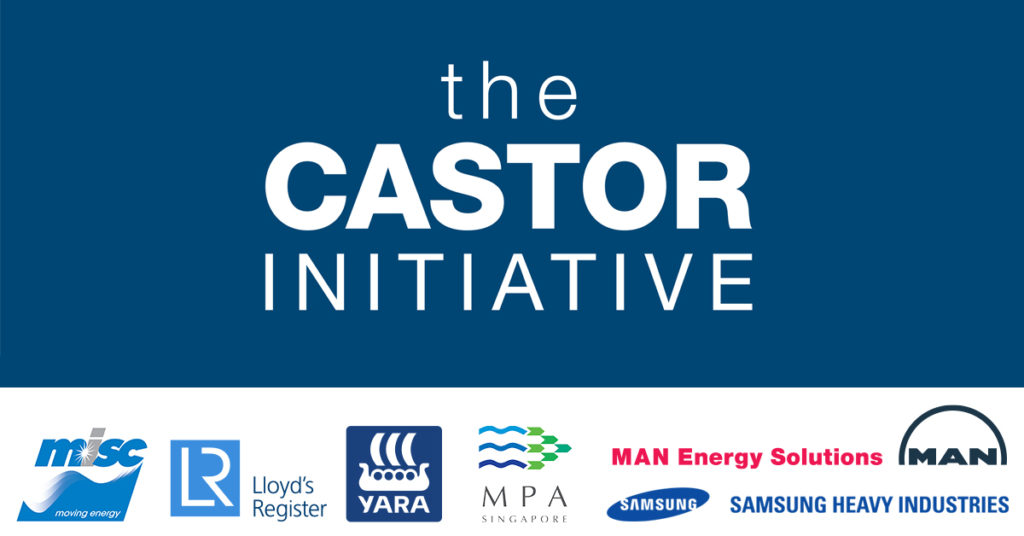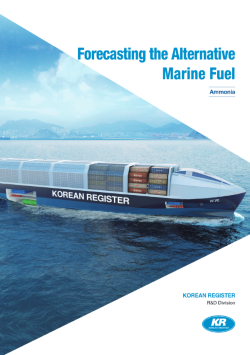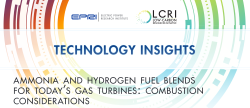The Ammonia Wrap: EU ambitions, new tankers, and GW scale green ammonia in Denmark, Norway, and Chile
By Julian Atchison on February 25, 2021
Welcome to the Ammonia Wrap: a summary of all the latest announcements, news items and publications about ammonia energy.
HyDeal Ambition

Thirty EU companies have partnered up as part of the HyDeal Ambition: an initiative to deliver green hydrogen across Europe at €1.5/kg before 2030. The first phase – solar-powered electrolysis in the Iberian Peninsula – will begin delivering green hydrogen in 2022, before ramping up to 95 GW solar power and 67 GW electrolyser capacity spread across Spain, France and Germany.
New marine tankers, fuel forecasts and SOFC developments
RINA and SDARI (with support from MAN ES) are partnering up to develop a new design of marine tanker powered by either methanol or ammonia. This isn’t SDARI’s first ammonia-fueled vessel design venture – in 2019 we reported on their partnership with Lloyd’s Register to design a 180,000 tonne ammonia-fueled bulk carrier.

In other design news, the Joint Development Project launched in early 2020 has new consortium members. Lloyd’s Register, MISC Berhad, MAN ES and Samsung Heavy Industries have been joined by Yara and the Maritime and Port Authority of Singapore to form the “Castor Initiative”, which aims to design, build and launch an ammonia-fueled tanker by 2025. The announcement came at a webinar on Ammonia as a Maritime Fuel, presented by the Getting to Zero Coalition.

Korea Shipping Register released a detailed forecast of ammonia as an alternative marine fuel option. The report sees value in the widespread use of ammonia-diesel dual-fuel engines, with fuel flexibility allowing operators to both meet emission obligations and guarantee fuel supply.
And Alfa Laval, DTU Energy, Haldor Topsoe, Svitzer and the Maersk Mc-Kinney Møller Center for Zero Carbon Shipping are entering into a joint project to accelerate the development of solid oxide fuel cell technology: SOFC4Maritime. Together, the project’s partners aim to realise the full decarbonisation potential of SOFCs for on-board power generation applications.
New technical briefing on power generation

EPRI released a new briefing paper looking at combustion of ammonia-hydrogen fuel blends in contemporary gas turbines. Though further R&D is required, 70%/30% ammonia/hydrogen fuel blends show a lot of promise for power generation applications.
UNSW leads research in P2X
The University of New South Wales (UNSW) will lead a new research consortium advising the NSW state government. The Power to X Industry Feasibility Study will investigate the production of essential feedstocks (including ammonia) from excess renewable energy as a way to kick start green industry in the Australian state. UNSW also published new research on sustainable ammonia production via a hybrid plasma-electrocatalytic process.
1GW of green ammonia in Denmark
Copenhagen Infrastructure Partners will embark on the construction of Europe’s largest green ammonia production facility: 1GW of electrolyser capacity powered by wind energy from the North Sea located in Esbjerg, Denmark. Maersk and DFDS are both official partners in the project.
More GWs of green ammonia in Norway and Chile

We’ve already reported on another GW of green ammonia, namely Yara’s plans to fully electrify its Porsgrunn ammonia plant in Norway. Now, the project has two new partners to bring the plans into reality: Statkraft and Aker Horizons.
Aker Horizons recently launched its own hydrogen platform company Aker Clean Hydrogen who, together with Mainstream Renewables, will explore more GWs of green hydrogen and green ammonia production possibilities in Chile.
Green ammonia and on-board hydrogen safety in the Orkneys
A year after the project was first proposed, Eneus Energy obtained planning permission for its green hydrogen/green ammonia production facility in Orkney Islands – the first of its kind in the UK. The facility will be powered by an expansion of the nearby Hammars Hill wind farm.
Orkney mariners also made the news this week with the completion of a world-first on-board hydrogen safety course. The course was developed and delivered by Orkney College UHI’s maritime studies department, in collaboration with Orkney Ferries and the European Marine Energy Centre. We watch with interest how the development of on-board hydrogen safety standards informs and accelerates marine ammonia safety considerations.
New government focus on ammonia in South Africa

A new report from South Africa’s Council for Scientific and Industrial Research (CSIR) lays out a blueprint for reviving the country’s “ailing” petrochemical industry through the production of green alternative fuels: chiefly hydrogen, ammonia and methanol. At the report’s webinar launch South African Higher Education, Science and Innovation Minister Dr Blade Nzimande backed the report’s findings, alluding to his country’s “unique competitive advantage” in any future production of renewable hydrogen and clean grid-power fuels.
India to make green ammonia production mandatory?

And finally, India’s Energy Minister Raj Kumar Singh flagged the use of green hydrogen in certain sectors & the scaling-up of domestic production of green ammonia to replace imports may become mandatory, as the Indian government embarks on its “National Hydrogen Energy Mission” (details to be finalised soon). Currently India imports ~2.5 million tons per year of ammonia, so Minister Singh’s suggestion to mandate the replacement of 10% of imports amounts to building 250,000 tonne/year of domestic green ammonia production capacity. This is not without precedent in India, where there’s already a government-mandated Renewable Purchase Obligation, forcing state-run utilities and other big electricity users to purchase (at present) 19% of their electricity from clean energy sources.
Sign up for weekly AEA updates
Make sure you’re signed up for AEA email updates, including our weekly newsletter featuring wrap articles just like this one.
